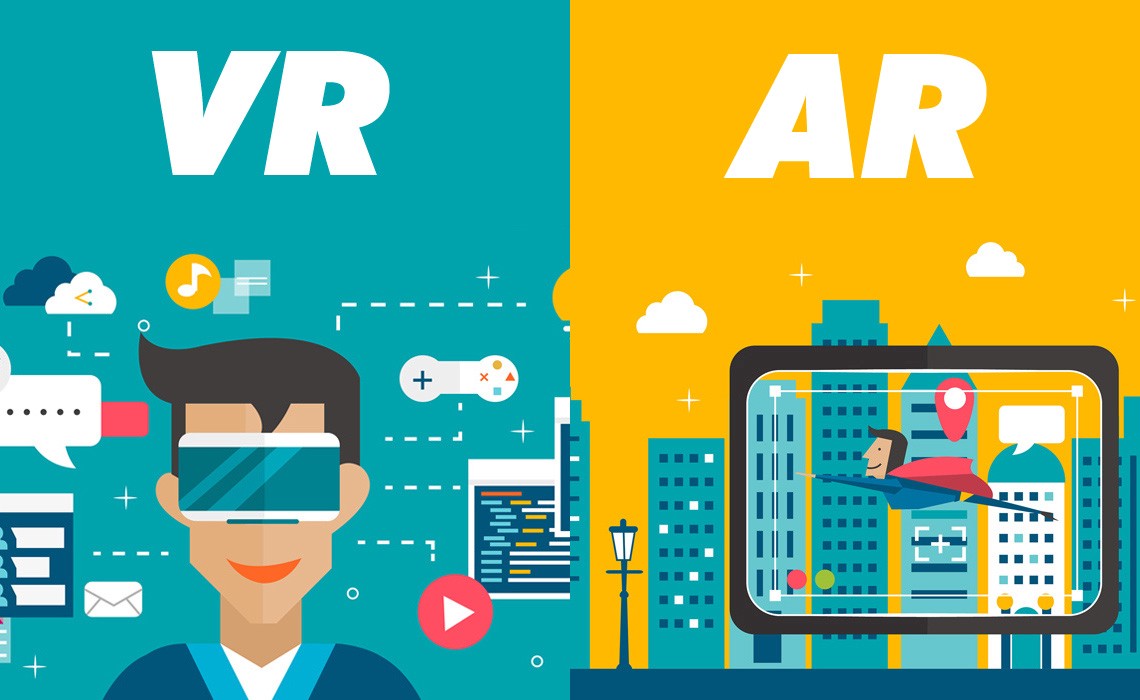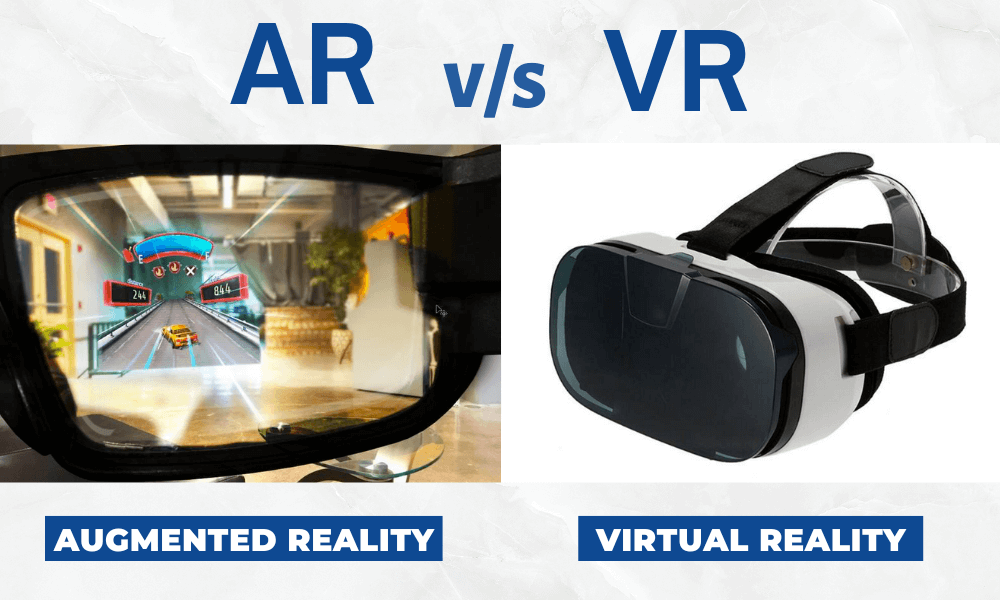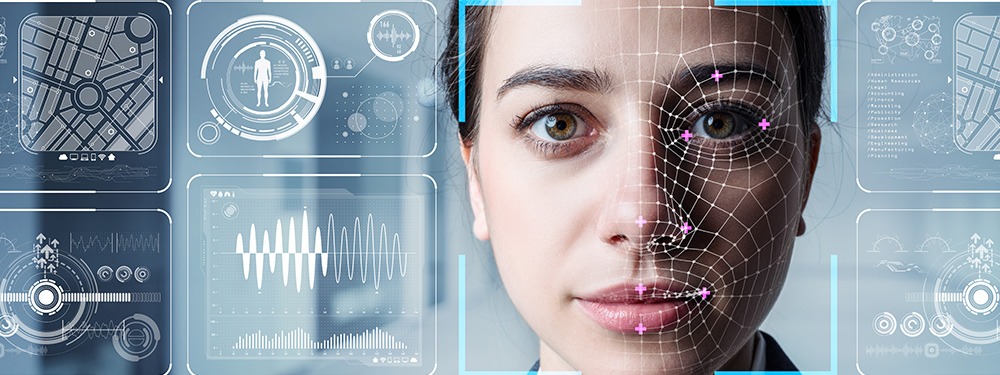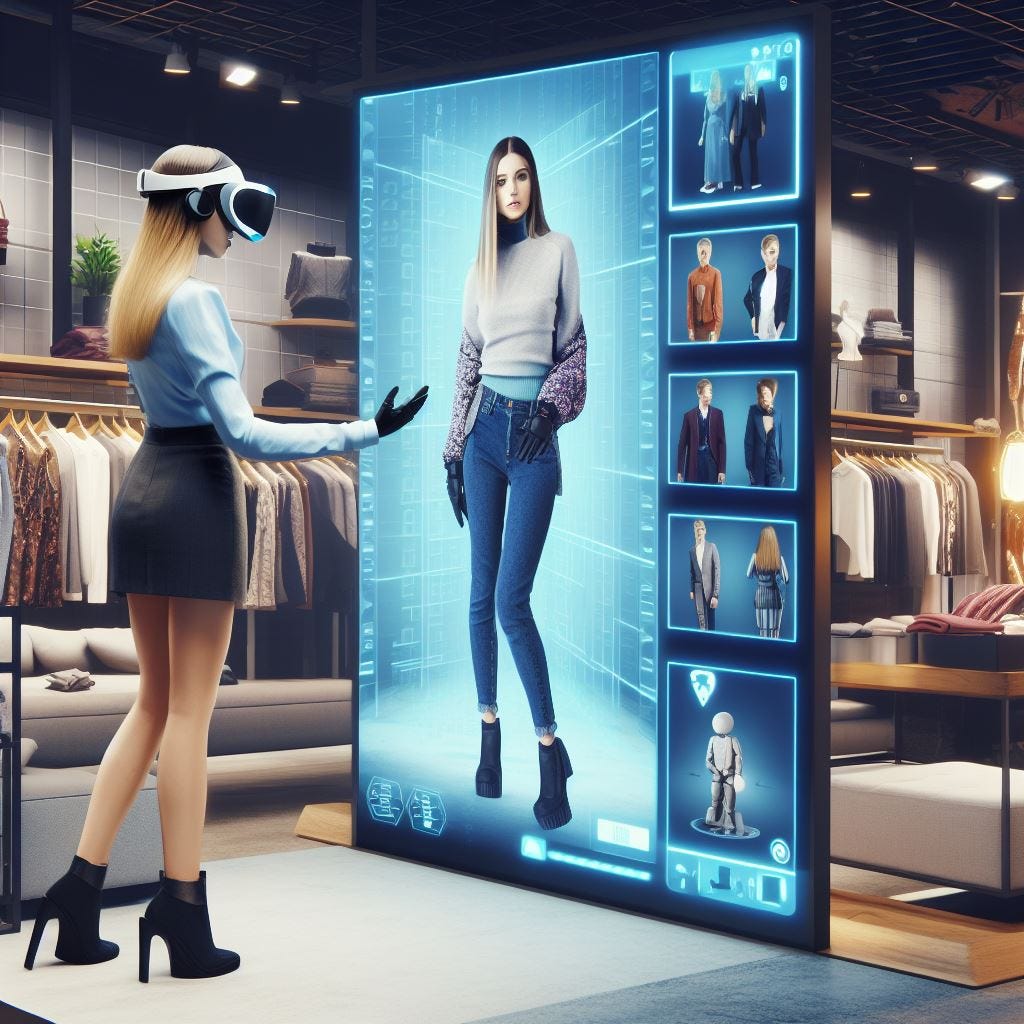Augmented reality and virtual reality are reality technologies that either enhance or replace a real-life environment with a simulated one.
Augmented reality (AR) augments your surroundings by adding digital elements to a live view, often by using the camera on a smartphone.
Virtual reality (VR) is a completely immersive experience that replaces a real-life environment with a simulated one.
In AR, a virtual environment is designed to coexist with the real environment, with the goal of being informative and providing additional data about the real world, which a user can access without having to do a search. For example, industrial AR apps could offer instant troubleshooting information when a handset is aimed at a piece of failing equipment.
Virtual reality encompasses a complete environmental simulation that replaces the user’s world with an entirely virtual world. Because these virtual environments are entirely fabricated, they are often designed to be larger than life. For example, VR could let a user box with a cartoon version of Mike Tyson in a virtual boxing ring.
While both virtual reality and augmented reality are designed to bring a simulated environment to the user, each concept is unique and involves different use cases. In addition to entertainment scenarios, augmented reality is also increasingly being used by businesses, because of its ability to generate informational overlays that add useful, real-world scenarios.
We’ll delve into how both of these reality technologies work, with a specific focus on the business cases for AR, in the sections that follow.
The differences between AR and VR

In today's rapidly evolving technological landscape, Augmented Reality (AR) and Virtual Reality (VR) have emerged as two transformative technologies, revolutionizing how we interact with digital content and experience immersive environments. While they share the common goal of enhancing human experiences, AR and VR differ significantly in their approaches and applications. In this blog post, we delve into the distinctions between AR and VR, exploring their unique characteristics and potential.
Defining Augmented Reality (AR) and Virtual Reality (VR)
AR integrates digital information and virtual objects into the real-world environment, enriching our perception of reality by overlaying computer-generated content onto physical surroundings. This technology enhances real-world experiences by providing contextual information, interactive elements, and immersive visualizations through devices like smartphones, tablets, and AR glasses.
On the other hand, VR immerses users in a completely virtual environment, isolating them from the physical world and transporting them to computer-generated realms. Through VR headsets and controllers, users can explore virtual landscapes, interact with objects, and engage in immersive simulations that mimic real-world scenarios.
User Experience and Interaction
One of the key distinctions between AR and VR lies in the user experience they offer. In AR, users maintain awareness of their physical surroundings while engaging with digital overlays and interactive elements. This blended experience enables users to seamlessly integrate virtual content into their everyday lives, whether it's navigating city streets with augmented directions or visualizing furniture placement in their living spaces.
In contrast, VR offers a fully immersive experience where users are transported to virtual environments, effectively disconnecting from the real world. By donning VR headsets, users can explore imaginary worlds, participate in virtual training simulations, and immerse themselves in interactive storytelling experiences that transcend physical boundaries.
Hardware and Accessibility
The hardware requirements for AR and VR technologies differ based on their respective immersive experiences. AR experiences can be accessed through a variety of devices, including smartphones, tablets, and dedicated AR glasses such as Microsoft HoloLens and Google Glass. These devices utilize cameras, sensors, and display screens to overlay digital content onto the user's field of view.
On the other hand, VR experiences typically require specialized hardware, namely VR headsets equipped with high-resolution displays, motion-tracking sensors, and immersive audio systems. Leading VR platforms like Oculus Rift, HTC Vive, and PlayStation VR offer users unparalleled immersion in virtual environments, albeit requiring dedicated equipment for optimal performance.
Applications and Use Cases
The applications of AR and VR span a diverse range of industries and domains, each leveraging the unique capabilities of these immersive technologies. AR finds applications in fields such as gaming, education, retail, healthcare, and industrial training. From popular mobile games like Pokémon GO to educational AR apps that bring history and science to life, AR enhances our interactions with the physical world while integrating digital content seamlessly.
VR, on the other hand, is widely used in gaming, virtual tourism, training simulations, architectural visualization, therapy, and entertainment experiences. VR gaming experiences transport players to fantastical realms, while virtual tours enable users to explore distant destinations from the comfort of their homes. In professional settings, VR simulations offer immersive training environments for industries ranging from aviation and healthcare to architecture and engineering.
Examples of Augmented Reality and Virtual Reality
Augmented Reality (AR): An example of Augmented Reality is the widely popular mobile game Pokémon GO. In Pokémon GO, players use their smartphones to explore the real world while encountering virtual Pokémon creatures overlaid onto their physical surroundings. The game utilizes GPS and AR technology to place Pokémon characters in real-world locations, allowing players to capture, train, and battle their virtual creatures in augmented reality. Pokémon GO demonstrates how AR can blend digital content with the real world to create immersive gaming experiences that engage players in interactive adventures within their own neighborhoods and cities.
Virtual Reality (VR): An example of Virtual Reality is the VR experience provided by Oculus Rift. Oculus Rift is a leading VR headset that transports users into immersive virtual environments, enabling them to explore, interact, and experience new realities from the comfort of their homes. With Oculus Rift, users can dive into immersive gaming worlds, embark on virtual adventures, and engage in social experiences with friends and communities across the globe. From adrenaline-pumping VR games to captivating storytelling experiences, Oculus Rift showcases the transformative power of VR technology in providing users with immersive and unforgettable journeys beyond the confines of the physical world.
A Brief History of AR & VR
The history of Augmented Reality (AR) and Virtual Reality (VR) traces back several decades, marked by significant milestones and technological advancements. VR can be traced back to the mid-20th century when pioneering experiments laid the groundwork for immersive experiences. In 1968, Ivan Sutherland developed the "Sword of Damocles," considered the first head-mounted display capable of displaying simple computer graphics. Subsequent developments in the 1980s and 1990s, such as the Virtuality arcade machines and Nintendo's Virtual Boy, introduced VR to the public, albeit with limited success. Meanwhile, AR emerged in the 1990s with early applications like Boeing's use of AR for aircraft assembly. However, it wasn't until the 2010s that AR and VR gained widespread attention and adoption. The launch of products like Google Glass in 2013 and the Oculus Rift VR headset in 2016 sparked renewed interest and investment in immersive technologies. Today, AR and VR have found applications across various industries, from gaming and entertainment to education, healthcare, and beyond. With ongoing advancements in hardware, software, and content development, AR and VR continue to push the boundaries of human-computer interaction, offering increasingly immersive and transformative experiences for users worldwide.
The Role of Augmented Reality on Business
Augmented Reality (AR) is revolutionizing the way businesses interact with customers, employees, and their physical environments. By overlaying digital information onto the real world, AR enhances product visualization, simplifies complex processes, and creates immersive experiences that drive engagement and innovation. In retail, AR enables customers to preview products in their own spaces before making purchase decisions, enhancing the shopping experience and reducing returns. In manufacturing and maintenance, AR provides technicians with real-time instructions and visual aids, improving efficiency and reducing errors. Moreover, AR-powered marketing campaigns captivate audiences with interactive content and storytelling, fostering brand loyalty and driving sales. As AR technology continues to evolve and become more accessible, businesses across industries are leveraging its capabilities to unlock new opportunities for growth, efficiency, and customer satisfaction.
What's next for AR and VR?
AR and VR have a decidedly bright future, and the years to come will bring many new capabilities and more widespread usage.
Improvements in video quality, processing power, mobile bandwidth, and AR/VR hardware will drive more mainstream acceptance, and falling development costs and complexity will provide more options for creators to explore. Systems that track eye movement and facial expressions will slowly make clunky joysticks and other controllers obsolete.
While video gaming and entertainment will continue to drive this market, AR and VR will also see emerging practical applications. In the world of virtual reality, these include fully virtual surgery, in which surgeons perform their jobs only in a simulated environment and robotic systems do the actual work. In the world of AR, the ability to virtually travel anywhere is made possible by an emerging tech platform called Mirrorworld, which aims to replicate the physical universe on a 1:1 scale.
Education will likely continue to shift to a virtual model on AR and VR platforms both in academia and in the corporate world. And finally, retailers will continue to rely on AR applications to upgrade virtual shopping applications, slowly rendering the need for physical storefronts obsolete.
For more information contact : support@mindnotix.com
Mindnotix Software Development Company


 AI-Taxi App
AI-Taxi App AI-Food App
AI-Food App AI-Property Mgmt App
AI-Property Mgmt App AI-CRM
AI-CRM AI-Fantasy App
AI-Fantasy App
 Web Development
Web Development App Development
App Development Business & Startup
Business & Startup Hire Developer
Hire Developer
 Digital Marketing
Digital Marketing Lead-generation
Lead-generation Creative Agency
Creative Agency Branding Agency
Branding Agency Augmented Reality
Augmented Reality Virtual Reality
Virtual Reality Internet of Things
Internet of Things Artificial Intelligence
Artificial Intelligence Blockchain
Blockchain Chatbot
Chatbot



